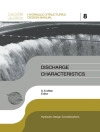When you edit a book, the editors should ask themselves, why are we – ing this and whom are we doing this for? To whom could this book be valuable as a source of information and possibly inspiration and of course are there other books with similar topics on the market? Indeed the mat- matical structure ‘partial order’ is explained in many mathematical te- books, which require different degrees of mathematical skills to comp- hend. Thus, as far as we can tell, all these books are dedicated directly towards mathematician working in the area of Discrete Mathematics and Theoretical Informatics. Although partial order is very well known in quantum mechanics, especially within the context of Young-diagrams, l- erature stressing the application aspect of partial order seems to be not available. However, an increasing number of publications in scientific journals have in recent years appeared, applying partial order to various fields of chemistry and environmental sciences. A recent summary can be found in a special issue of the journal Match – Commun. Math. Comput. Chem. 2000, edited by Klein and Brickmann. However, we believe that this journal possibly is too specific and as such it may not reach scientists actually applying partial order in various fields of research. Hence, we dared to initiate the editing of this book in order to address a broader au- ence and we were happy to convincing distinguished scientists working with different aspects of partial order theory to contribute to this book.
Tabela de Conteúdo
Chemistry and Partial Order.- Partial Ordering of Properties: The Young Diagram Lattice and Related Chemical Systems.- Hasse Diagrams and their Relation to Molecular Periodicity.- Directed Reaction Graphs as Posets.- Environmental Chemistry and Systems.- to partial order theory exemplified by the Evaluation of Sampling Sites.- Comparative Evaluation and Analysis of Water Sediment Data.- Prioritizing PBT Substances.- Quantitative Structure Activity Relationships.- Interpolation Schemes in QSAR.- New QSAR Modelling Approach Based on Ranking Models by Genetic Algorithms – Variable Subset Selection (GA-VSS).- Decision support.- Aspects of Decision Support in Water Management: Data based evaluation compared with expectations.- A Comparison of Partial Order Technique with Three Methods of Multi-Criteria Analysis for Ranking of Chemical Substance.- Field, Monitoring and Information.- Developing decision support based on field data and partial order theory.- Evaluation of Biomonitoring Data.- Exploring Patterns of Habitat Diversity Across Landscapes Using Partial Ordering.- Information Systems and Databases.- Rules and Complexity.- Contexts, Concepts, Implications and Hypotheses.- Partial Orders and Complexity: The Young Diagram Lattice.- Historical remarks.- Hasse Diagrams and Software Development.- Introductory References.- Introductory References.
Sobre o autor
Rainer Brüggemann studied chemistry at the Ludwig-Maximilians University, Munich. He received his Ph D in 1977. He joined a research group in 1980 at the Technical University of Berlin. 1984 saw him move to the GSF – National Research Center for Environment and Health in Neuherberg near Munich. Since 1996 he is senior scientist at the Leibniz-Institute of Freshwater Ecology and Inland Fisheries, Berlin.Lars Carlsen studied chemistry at the University in Copenhagen. He received his Ph D in 1977 and his DSc in 1989. In 1991 he joined the National Environmental Research Institute in Denmark as Director of the Department of Environmental Chemistry. Since 1999 he has been an assigned professor in environmental chemistry at the Roskilde University, Denmark, and in 2000 he founded his own consultancy, ‘Awareness Center’.












